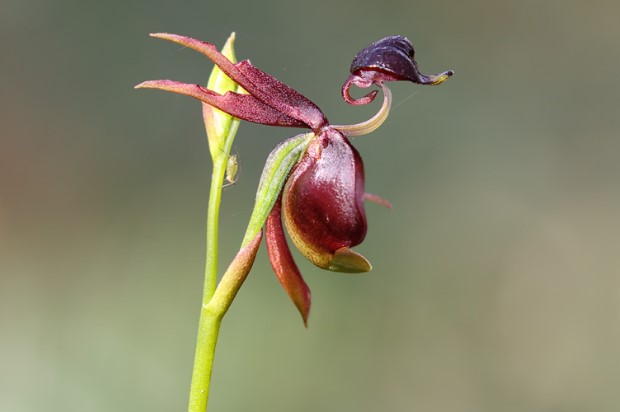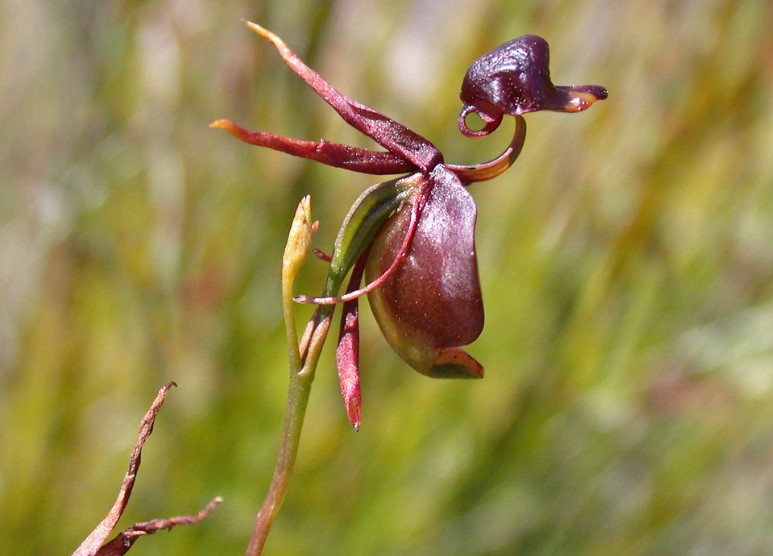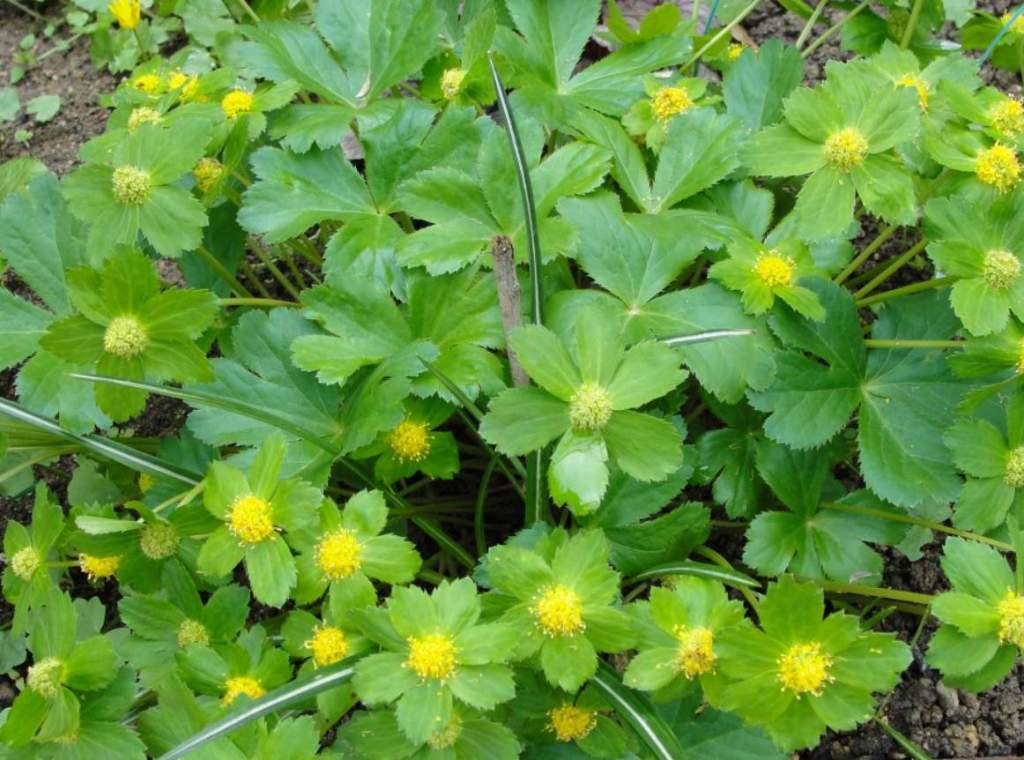Caleana major is a species of orchid, commonly known as the Flying Duck Orchid or Large Duck Orchid. It is native to Australia and is known for its unique and unusual shape. The flower of this species is shaped like a duck with outstretched wings, which earned it its name. This orchid is also known for its bright pink and purple coloring, making it a popular ornamental plant for gardens.
Caleana major typically grows in moist, shady areas and is considered a semi-terrestrial orchid. This is an alluring flower that attracts insects, specifically male sawflies, for pollination through a phenomenon known as pseudocopulation. In 1986, this stunning orchid was honored on an Australian postage stamp.

Caleana major is a perennially growing tuberous herb, typically standing between 8 and 16 inches tall. It has a single, narrow, and lance-shaped leaf, which is usually reddish in color and spotted. This leaf emerges from the base and can be between 2 and 5 inches long and 0.2 and 0.3 inches wide. The plant bears up to five shiny, reddish-brown flowers that are 0.8–1 inch long and 0.2–0.3 inch wide. In some rare cases, the flower may be green with dark spots. The sepals and petals of the flower are around 0.5–0.6 inches long and have pointed tips.
The flower has a unique appearance, with a labellum that resembles the head of a duck on a neck-like stalk and a sensitive stem that traps visiting insects. This species of orchid blooms between September and January and is native to Australia, growing in different habitats such as eucalyptus woodland, coastal shrubland, and heathland.
The flying duck orchid, or Caleana major, is not known to be poisonous to humans. However, it is important to note that not all plants are safe to consume, and some may cause skin irritation or allergic reactions, so it’s always best to err on the side of caution when it comes to ingesting or handling plants, especially if you’re not sure of their safety.
It is primarily found near the coast but can also be found at higher altitudes. The Caleana major was first described in 1810, and the genus name honors botanical collector George Caley, while the species name “major” means “large” or “great” in Latin. The plant is difficult to maintain in cultivation and flowers for one or two years before gradually weakening and dying. It is pollinated by insects.







